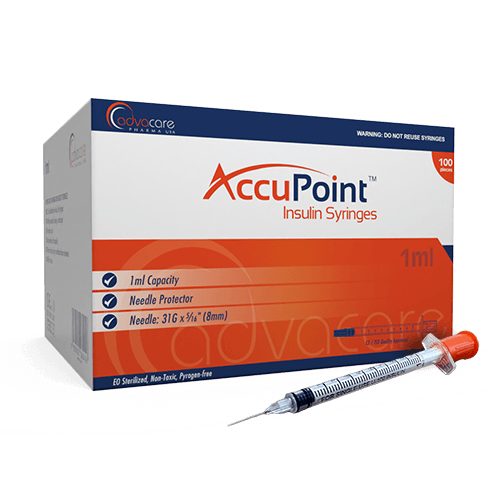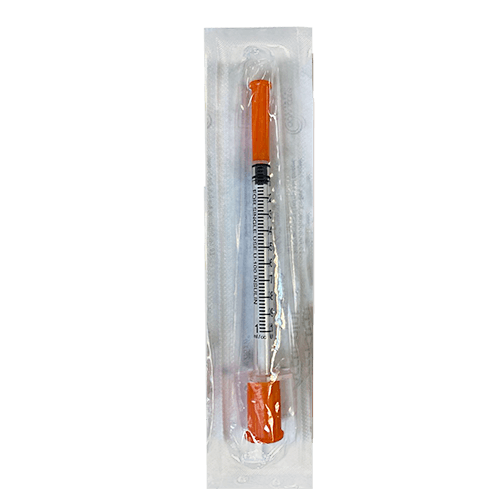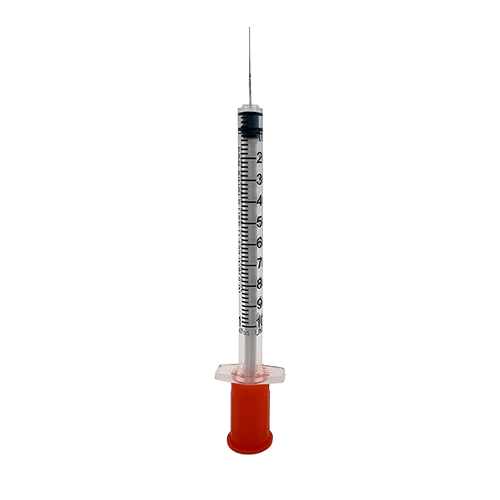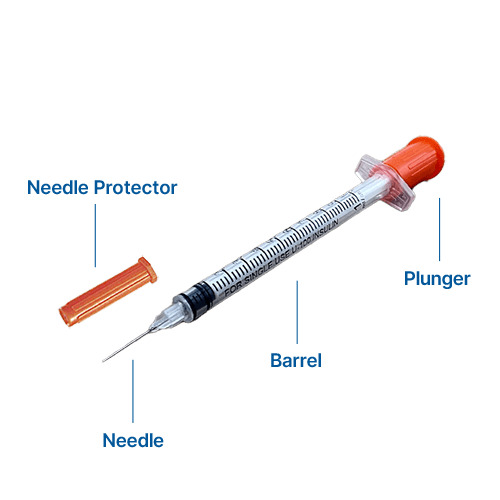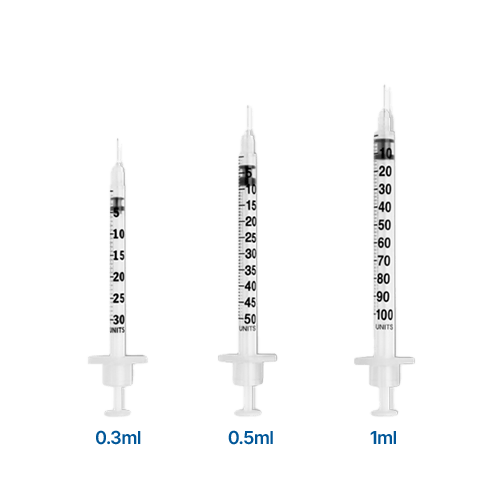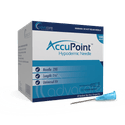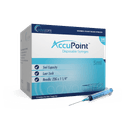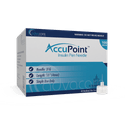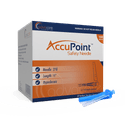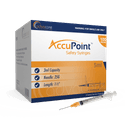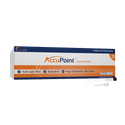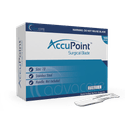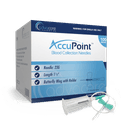- Home›
- Medical Devices›
- Injection Instruments›
- Injection & Precision Instruments›
- Insulin Syringes
Insulin Syringes
Capacity
Packaging
What are Insulin Syringes?
Insulin Syringes are used to accurately measure and administer insulin to patients with diabetes. They come in calibrated sizes of 0.3, 0.5, and 1ml, allowing for precise dosing of insulin. These syringes are designed to be used with insulin vials and are typically single-use disposable items.
Insulin syringes are typically available in different needle lengths, such as 8mm, 10mm, and 12mm, allowing for flexibility in injection sites. Patients should consult with their healthcare provider to determine the appropriate needle length for their needs based on factors such as body mass and injection site.
Our Insulin Syringes are manufactured in state-of-the-art facilities in China, India, and the USA, where we employ strict quality control measures to ensure that every product meets our high standards of safety and performance. At AdvaCare Pharma, we are committed to providing the best possible care for patients around the world.
Product Specifications
Features
Insulin Syringes are available in multiple sizes and are designed to deliver precise doses of insulin. The syringe barrel size determines the amount of insulin that can be drawn into the syringe and is measured in milliliters (mL). The sizes available are 0.3 ml, 0.5 ml, and 1 ml, with each size suited for different insulin doses.
The number lines on an insulin syringe barrel are marked at specific intervals, depending on the syringe size, to ensure accurate dosing of insulin. For example, 0.3 mL syringes are numbered at 1-unit intervals and are used for insulin doses under 30 units. The 0.5 mL syringe is numbered at 1-unit intervals and is used for 30 to 50 units of insulin, while the 1 mL syringe is numbered at 2-unit intervals and is used for doses over 50 units of insulin.
Why are we a trusted Insulin Syringes manufacturer?
AdvaCare Pharma is a global manufacturer of Insulin Syringes, produced in ISO and CE-certified facilities that adhere to the highest quality control measures. Our AccuPoint™ brand is recognized in 65 markets worldwide for its superior quality and performance, and our innovative solutions are trusted by healthcare professionals around the world.
We are committed to providing our medical distributors in the healthcare industry with exceptional customer service and support. Our expert teams are available to answer any questions our customers may have and offer guidance on the best solutions.
As a quality-focused insulin syringe manufacturer, we understand the importance of timely delivery, and we have established a global distribution network to ensure our medical devices reach our distributors as quickly and efficiently as possible.
Uses
How should Insulin Syringes be used?
In the routine of diabetes management, using insulin syringes correctly is paramount for successful treatment:
- Start by confirming the exact insulin amount prescribed. And select a syringe that aligns with this volume.
- Prior to the insulin's administration, it is imperative to cleanse the intended site of injection with an alcohol wipe, a step that seriously lowers the risk of introducing infections.
- Upon preparing the syringe and insulin vial, check that hands are clean to maintain sterility.
- Carefully remove the syringe cap, taking caution not to contaminate the needle.
- Draw back the plunger to the mark that corresponds with your insulin dose, checking twice to guarantee accuracy.
- For the injection, the needle should be inserted into the cleaned area at a precise angle, commonly recommended at ninety degrees so the insulin is delivered into the subcutaneous tissue properly.
- The plunger is then pressed steadily to administer the dose. Completing the injection, promptly dispose of the syringe as per safety guidelines, avoiding reuse to prevent complications.
- Maintaining a rotation of injection sites is also advised to prevent the formation of fatty deposits or tissue damage, which can affect insulin absorption.
- Each new injection should be spaced at least 1 inch away from the last, and sites should be rotated systematically.
- Post-use, insulin syringes should be stored appropriately, in a place that shields them from direct light and extreme temperatures, to preserve the insulin's efficacy.
How should Insulin Syringes be disposed of?
The disposal of insulin syringes requires careful attention to safety protocols. Directly after use, the syringe should be placed into a designated sharps disposal bin without attempting to recap the needle, mitigating the risk of needle-stick injuries. These containers are specially designed to safely contain sharps, preventing accidental punctures.
When the container reaches three-quarters full, it should be sealed and disposed of following local health and safety regulations, which may involve returning it to a pharmacy or a medical facility equipped to handle such waste. Never dispose of these items in household trash or recycling bins to avoid potential harm to sanitation workers or others.
How do Insulin Syringes work?
Insulin syringes are a valuable component of diabetes management, designed for the precise measurement and administration of insulin doses. These devices consist of a barrel marked with measurement indicators for dosing accuracy, a plunger used to draw in and expel the insulin, and a fine needle developed for subcutaneous injection.
The process involves inserting the needle into a vial of insulin, pulling the plunger back to draw the prescribed amount of insulin into the barrel, and then injecting it into an appropriate site on the body. This method helps individuals with diabetes to manage their condition, maintaining control over their blood glucose levels.
What are the different needle capacities of Insulin Syringes?
Insulin syringes are available in various capacities to cater to the diverse needs of individuals managing diabetes. These include syringes capable of holding 0.3ml, 0.5ml, and 1ml of insulin, allowing for flexibility in dosing.
The choice of syringe capacity is dictated by the user's specific insulin dosage requirements, ensuring that each person can administer their insulin in the most efficient manner possible.
This variety in syringe sizes addresses the personalized nature of diabetes treatment, accommodating a range of insulin dosages prescribed to individuals based on their unique health needs.
Are there any safety features on Insulin Syringes?
Modern insulin syringes incorporate several safety features aimed at minimizing the risk of needle-stick injuries and establishing the safe use and disposal of these medical devices.
These features include needle guards and retractable needles, which either cover the needle after use or allow the needle to retract back into the syringe barrel, thus preventing accidental contact with the needle point.
Such safety mechanisms protect both the individuals administering the insulin and those responsible for the disposal of the syringes, elevating overall safety in the management of diabetes.
What are the different needle lengths available for Insulin Syringes?
The needle length on insulin syringes can vary, typically ranging from 8mm to 12mm. This variation is designed to accommodate different body types, injection preferences, and the specific requirements of insulin therapy.
Shorter needles are often recommended for individuals with less subcutaneous fat or for pediatric patients, whereas longer needles may be better suited for adults with a greater amount of subcutaneous fat.
The selection of needle length is a serious aspect of personalized diabetes care, impacting both the efficacy of insulin delivery and the comfort of the injection process.
FAQs
How do Insulin Syringes work?
Insulin syringes are used to draw insulin from a vial and then inject it into the body. The syringe has a plunger that is pushed to draw insulin into the barrel, and then pushed again to inject the insulin into the subcutaneous tissue.
What are the different needle capacities of Insulin Syringes?
Insulin syringes are available in 0.3ml, 0.5ml, and 1ml capacities, allowing for precise dosing of insulin depending on the patients needs.
How should Insulin Syringes be stored and handled?
They should be stored in a cool and dry place, away from direct sunlight and heat sources. They should be kept out of reach of children and disposed of properly after use.
Can Insulin Syringes be reused?
No, they are single-use disposable items and should not be reused to avoid the risk of infection and inaccurate dosing.
Are there any safety features on Insulin Syringes?
Yes, some syringes come with safety features such as needle guards or retractable needles to prevent accidental needle-stick injuries and to ensure safe disposal.
How do you ensure the quality of your Insulin Syringes?
We adhere to strict quality assurance processes throughout the design, manufacturing and distribution of our medical devices, including but not limited to CE, ISO and/or USFDA certifications, to ensure they meet the highest standards of quality and safety.
Do you provide Insulin Syringe samples for evaluation purposes?
Yes, we provide samples of our medical devices for evaluation and product registration. Get in touch with our International Sales Department to request samples and discuss your unique needs.
Are your Insulin Syringes CE marked?
Certainly, our medical devices meet CE certification standards, ensuring compliance with European Union regulations. Furthermore, our manufacturing protocols strictly adhere to ISO standards to maintain high-quality standards across all products.
What is the process for obtaining prices of your Insulin Syringes?
Obtaining pricing details for our medical devices is easy. Just contact our International Sales Department, and they will promptly furnish you with a quotation and discuss potential distribution prospects.
Is marketing assistance available for distributors of your Insulin Syringes?
Yes, we offer a range of customized marketing support and resources to aid distributors in effectively promoting our medical devices, expanding brand recognition, and facilitating product distribution in their markets.
Can I distribute your Insulin Syringes online?
Yes, authorized distributors can market our medical devices via their online platforms, including websites and e-commerce channels. It is crucial to adhere to local regulations and our distribution guidelines for authentic and lawful product distribution.
References
New Advances in Type 1 Diabetes
This article by S Subramanian, F Khan, and IB Hirsch in BMJ discusses recent advancements in type 1 diabetes care, including insulin therapy and the crucial role of insulin syringes in disease management. It addresses the challenges of insulin access and affordability, highlighting the importance of reliable insulin delivery systems for patient care.
Coping and Adaptation Strategies Among Young Persons Living with Type 1 Diabetes and Their Caregivers: Textual and Photovoice Analyses
This study by BA Owusu, P Ofori-Boateng, and DT Doku, published in BMC Public Health, explores the coping and adaptation strategies of young individuals with type 1 diabetes and their caregivers, emphasizing the role of insulin syringes in managing the condition. It discusses the challenges faced by patients, including insulin rationing and syringe reuse.

You might be interested in...
Why AdvaCare Pharma?
As an industry leader, we are aware of our responsibility to provide affordable and sustainable solutions to improve healthcare worldwide.
